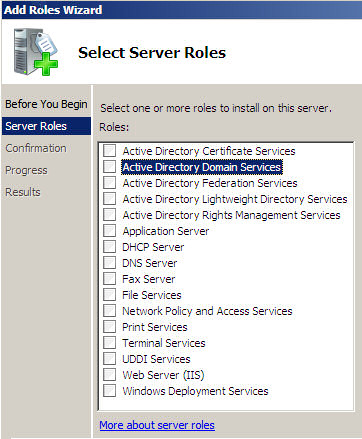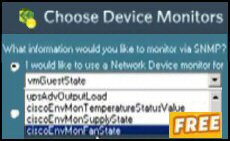Windows Server 2008 – How to Add Roles
The key to managing your Windows Server 2008 network is planning then configuring server roles. Questions to ask include, ‘How many servers do we need?’. Which roles do I need on each server, for example, DNS, *AD DS, File and Print.
This planning stage could also be a good time to analyze your connections to the outside world, and appraise the need for old configurations such as **DMZ and ***RADIUS servers, with new ideas such as ****NPAS servers and a remediation network.
* Active Directory Directory Service, ** Demilitarised Zone, *** Remote Authentication Dial-in User Service, **** Network Policy and Access Services.
For each individual Windows Server 2008, the place to start in your task of adding and configuring the pre-defined roles is in the Server Manager.
♦
Launch the Server Manager
The Windows 2008 version of Server Manager is intelligent enough to work out dependencies and to install any necessary underlying services automatically.
With the Add Roles Wizard you get the chance to inspect the services and also to configure options for that particular role.
- Click on the Windows ‘Start’ button on the Task bar
- Type ‘Server’ in the dialog box
- Double-click the Program ‘Server Manager.
Customize This Server
Once your Server Manager appears, scroll down to ‘ 3) Customize This Server’. Now you can click ‘Add roles’.

Add Roles Wizard
Some roles have their own second level Services Wizard, for example, the File Services include the option to install DFS and Search. [IIS not installed by default]
Select Server Roles:
- Active Directory Certificate Services
- Active Directory Domain Services
- Active Directory Federation Services
- Active Directory Lightweight Directory Services
- Active Directory Rights Management Services
- Application Server
- DHCP Server
- DNS Server
- Fax Server
- File Services
- Hyper-V (64bit editions only)
- Network Policy and Access Services
- Print Services
- UDDI Services
- Web Services (IIS)
- Windows Deployment Services
Guy Recommends: A Free Trial of the Network Performance Monitor (NPM) v12
v12
SolarWinds’ Network Performance Monitor will help you discover what’s happening on your network. This utility will also guide you through troubleshooting; the dashboard will indicate whether the root cause is a broken link, faulty equipment or resource overload.
Perhaps the NPM’s best feature is the way it suggests solutions to network problems. Its second best feature is the ability to monitor the health of individual VMware virtual machines. If you are interested in troubleshooting, and creating network maps, then I recommend that you give this Network Performance Monitor a try.
Download your free trial of SolarWinds Network Performance Monitor.
Group Your Roles
- Active Directory Domain Services (Domain Controller)
- DNS Server
- DHCP Server
Alternatively:
- Application Server
- File Services
- Print Services
Maybe
- Terminal Services
- Network Policy and Access Services
Two Additional Roles
- Core (No GUI)
- RODC (Read-only domain controller)
- Powershell Add-WindowsFeature
Select Server Roles
Remember to re-visit the Server Manager at regular intervals so that you can configure additional roles or add new features.
Guy Recommends SolarWinds’ Free Network Monitor
Thus utility makes it easy to check the health of a router or firewall. Check the real-time performance, and availability statistics, for any device on your network. Get started with an extensive collection of "out-of-the-box" monitors for popular network devices. Give Network Monitor a whirl – it’s free. Download your free Network Device Monitor
If you need more comprehensive network analysis software:
Download a free trial of NPM (Network Performance Monitor)
Server Manager 
The Server Manager is the hub of Windows Server 2008. This is the place to install roles and features and check that they are working correctly.
Server Manager goes right back to the days of NT 3.5. However, in Windows Server 2003 it took a back seat in the form of, ‘Configure your Server’ or ‘Manage your Server’. At the time, these Configure or Manage Server menus seemed an unnecessary restrictive layer, consequently, I preferred to invest time in creating an MMC console and then adding my favourite snap-ins. See more on the 2008 Server Manager.
Server Roles
The term ‘Roles’ when applied to Windows Server 2008 has the same connotation as the word ‘Role’ in medium to large size company. Human resources manager, Secretary to the MD, financial director. In other words ‘Role’ describes a person primary job. In a smaller company one person may take on server roles, thus it is with Windows Server 2008, the server’s role maybe DHCP, DNS, and Active Directory.
ServerMangerCMD.exe Cmdline options – like PowerShell
Windows Server 2008 Features and Services
If you didn’t find a Windows Server 2008 amongst the Roles, the chances are it’s amongst the 20+ ‘Features. See here more about how toadd Windows Server 2008’s features.
Summary of the Roles in Windows Server 2008
Just because you are good at computing does not mean that you are good at planning or organizing. Perhaps with W2K3 you got by through being above average at troubleshooting and having an intuitive understanding of the technology. Also after 5 years of Windows Server 2003 you have things figured out and the servers are running smoothly. Come Windows Server 2008 and you are going to have to learn new tricks, so make it a personal challenge to learn the best of the new technology as fast as possible.
If you think of the new ‘Roles’ management techniques as your friends, then they will help you reach new levels of technical expertise. If on the other hand, you fight the wizards then the struggle will sap your energy and you will miss an opportunity to learn new ways of configuring old tasks.
If you like this page then please share it with your friends
Microsoft Windows Server 2008 Topics:
• Server 2008 Home • Overview • What’s New? • Migration Advice • Install • SP1 Review
• AD DC • Roles • Features • Editions • Hyper-V • UAC • IPv6 • Group Policy • Free NPM Trial




